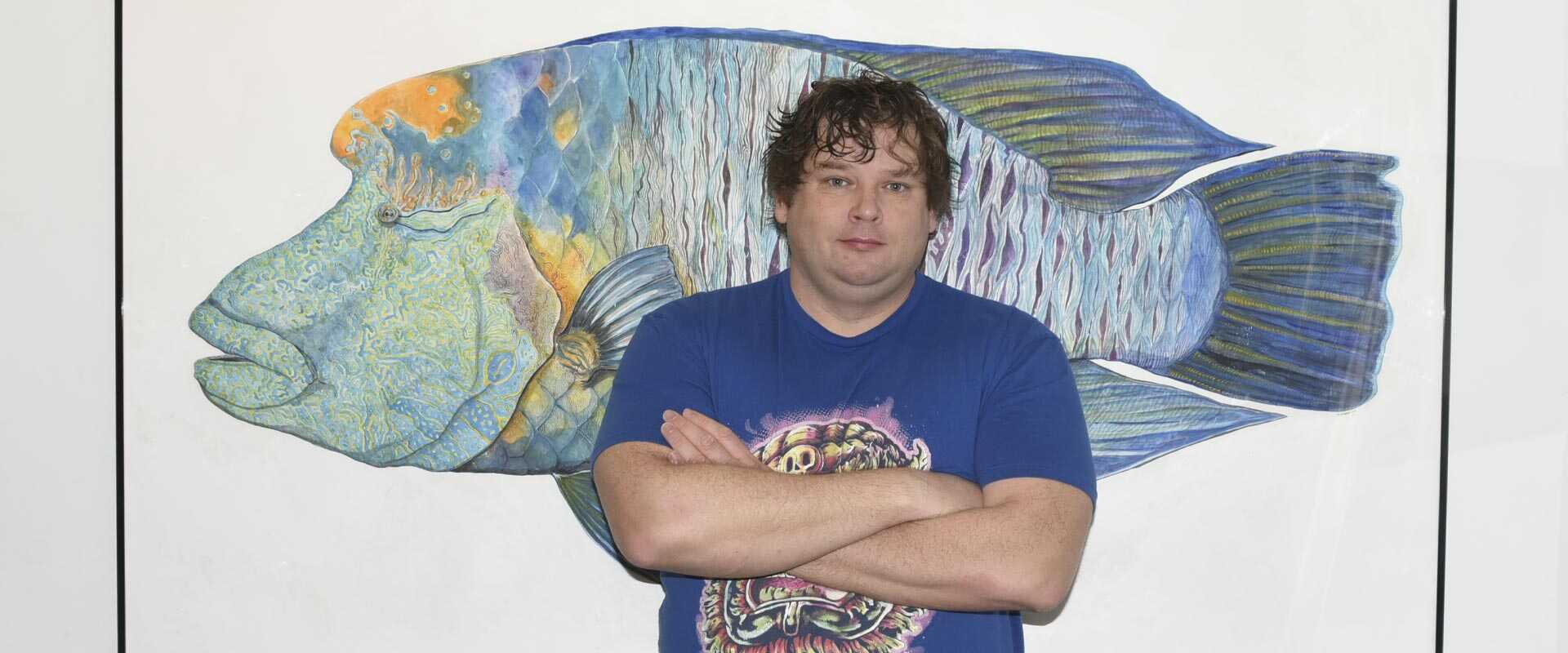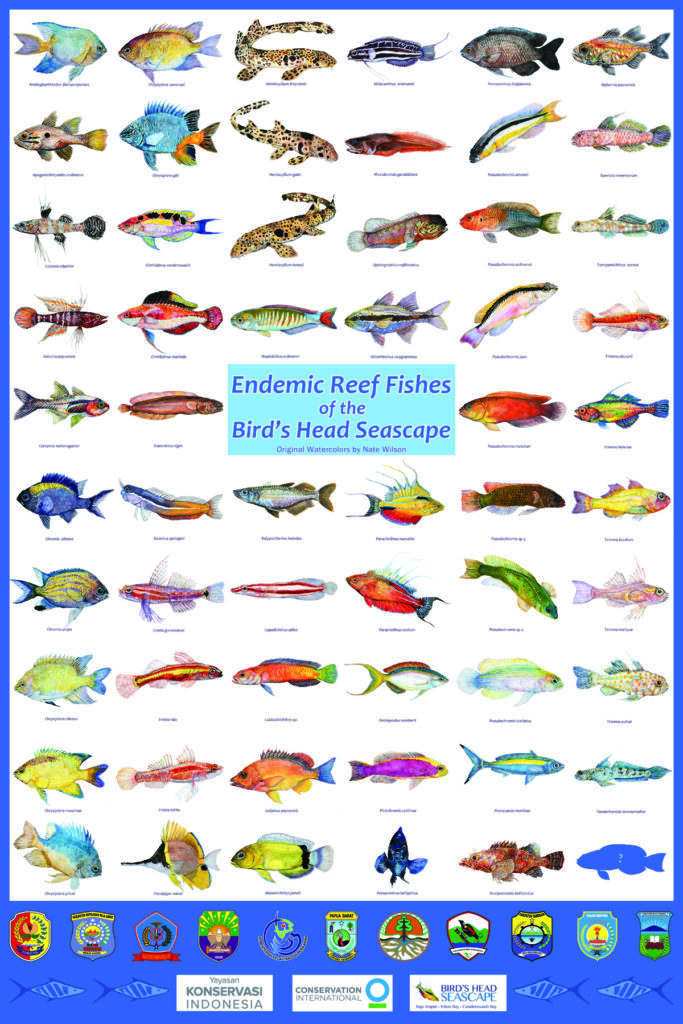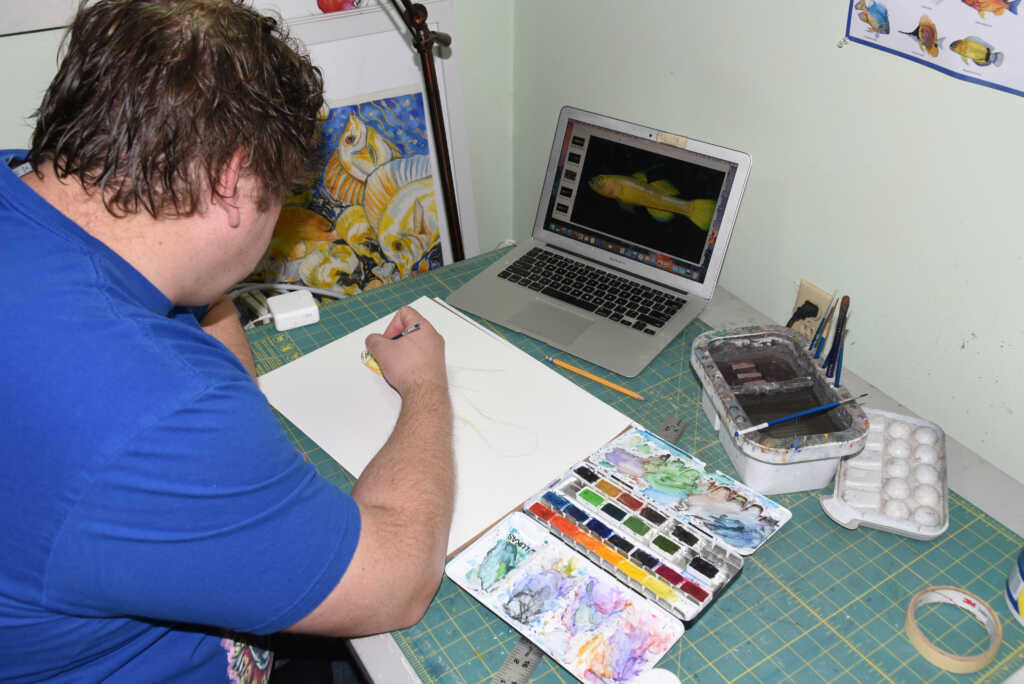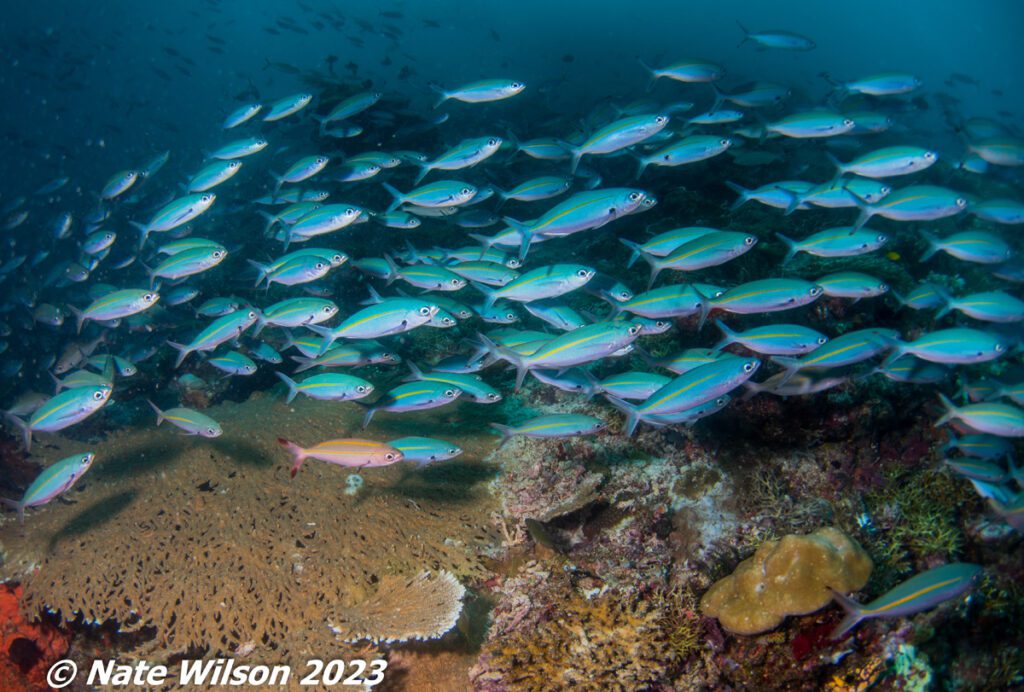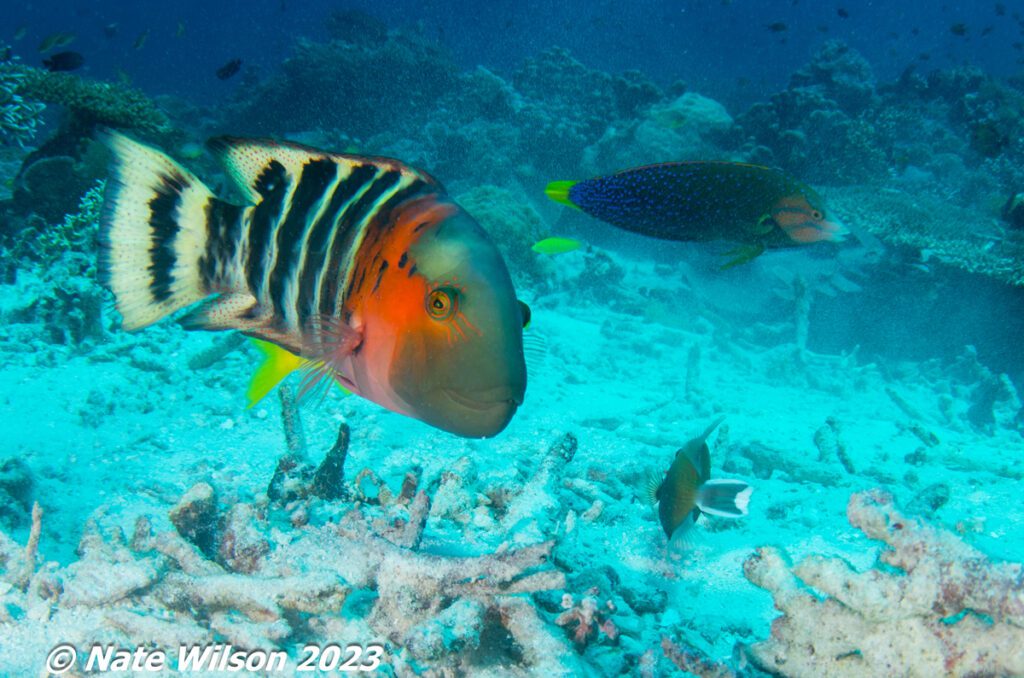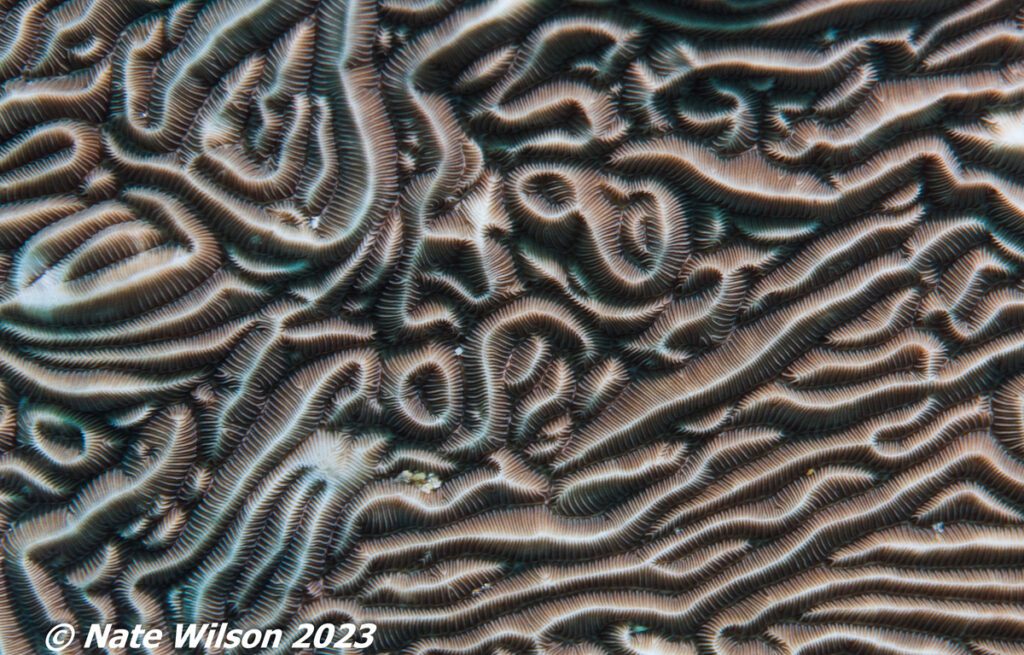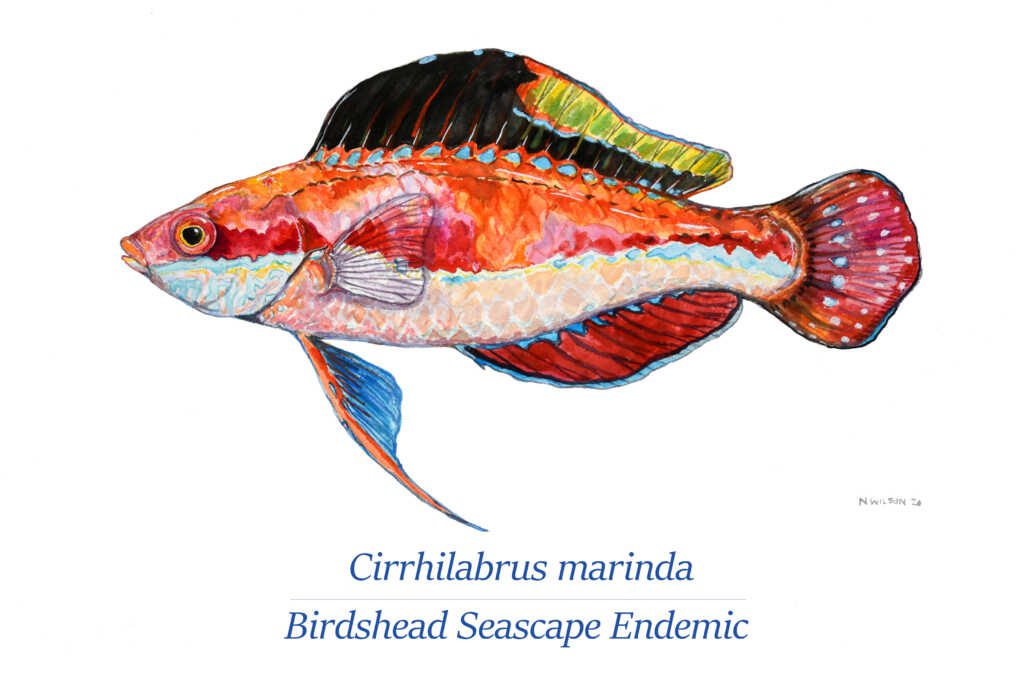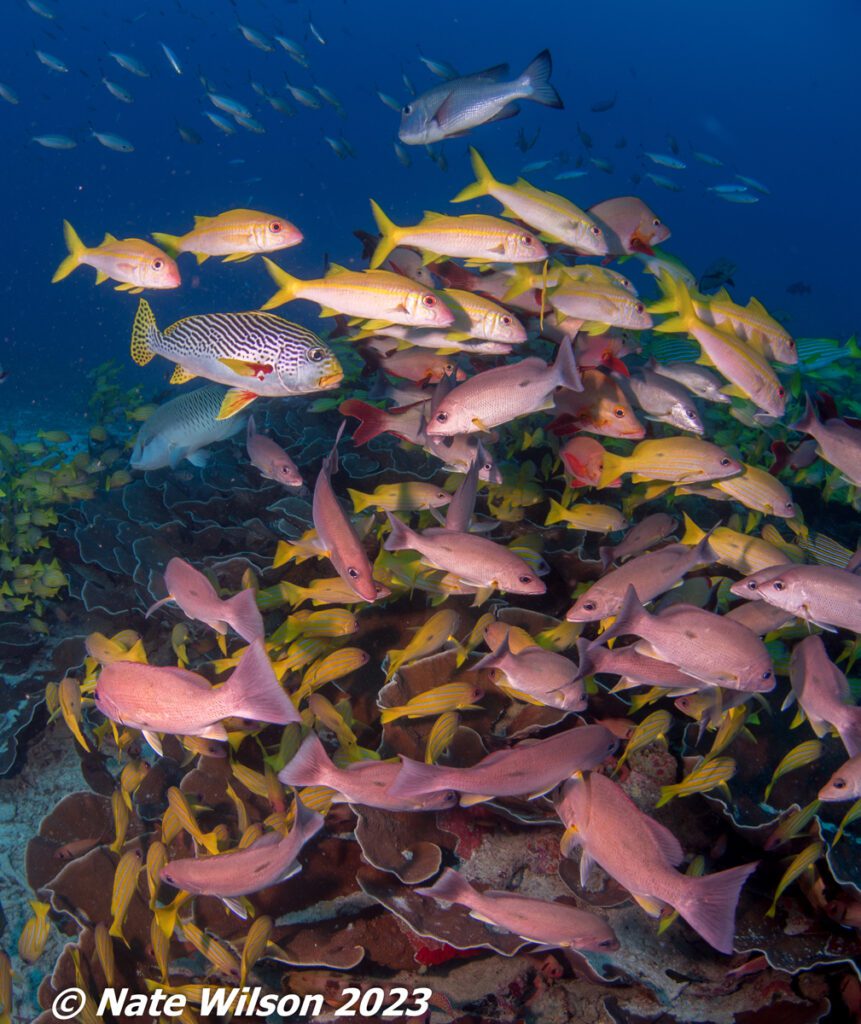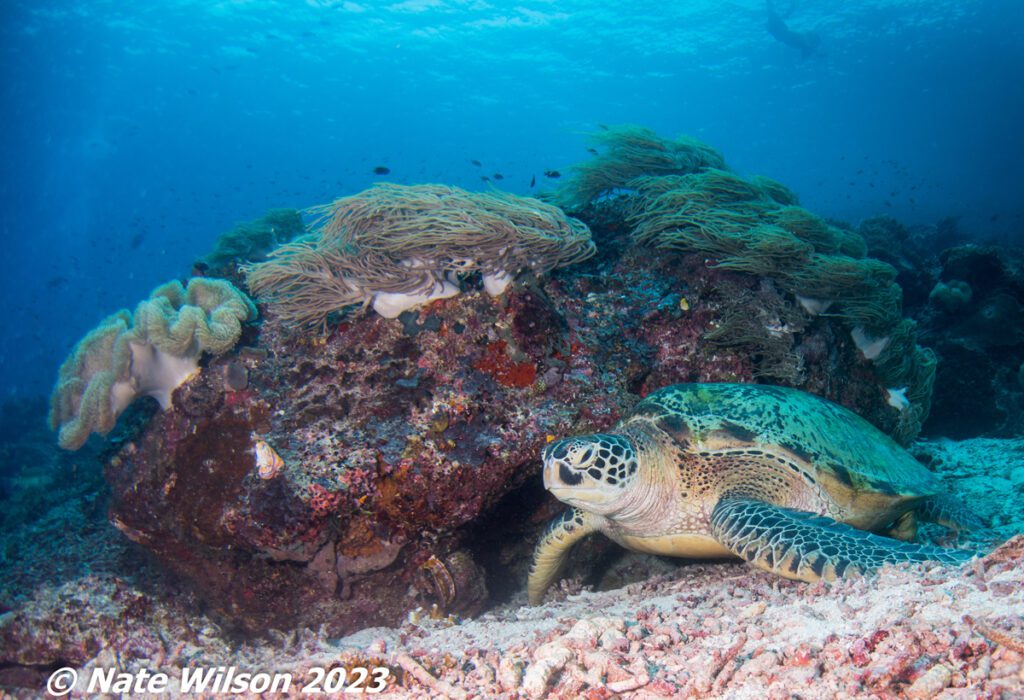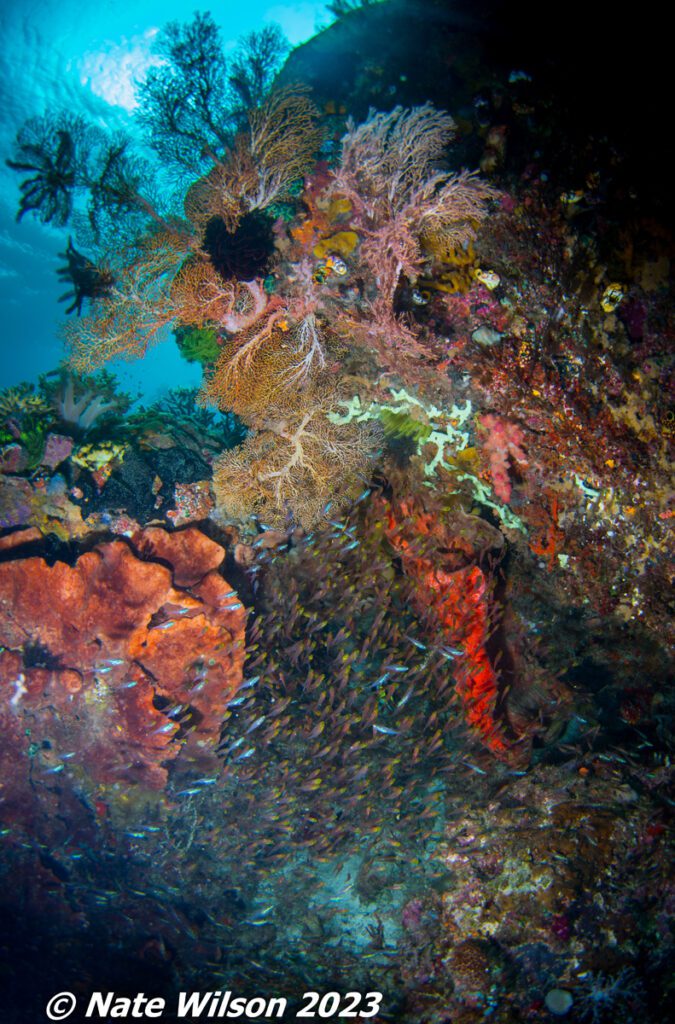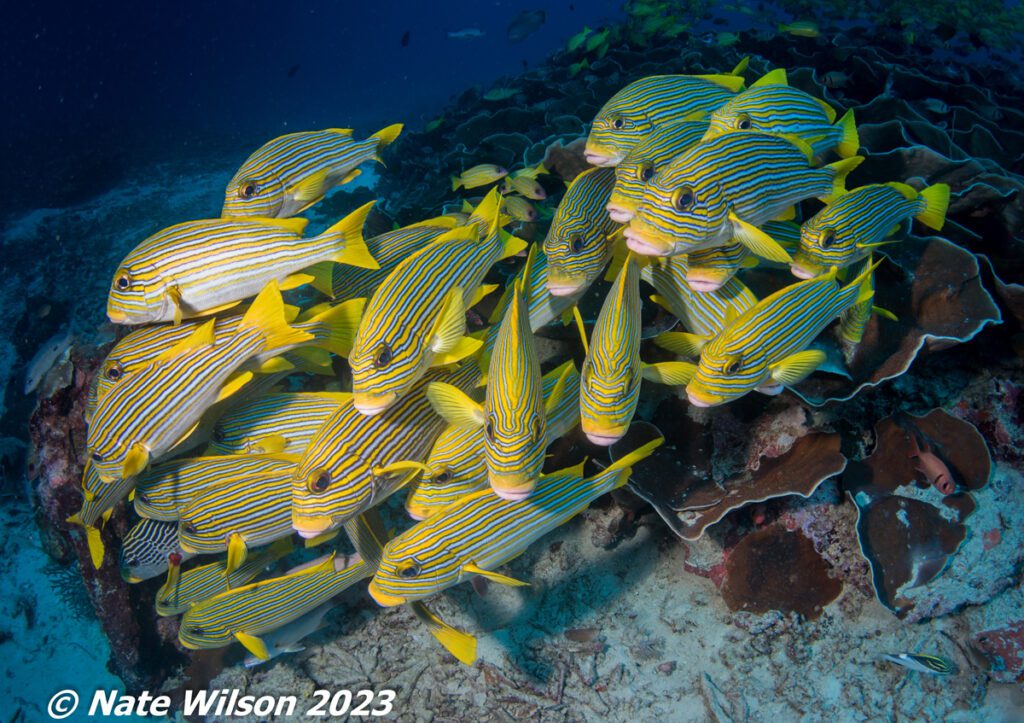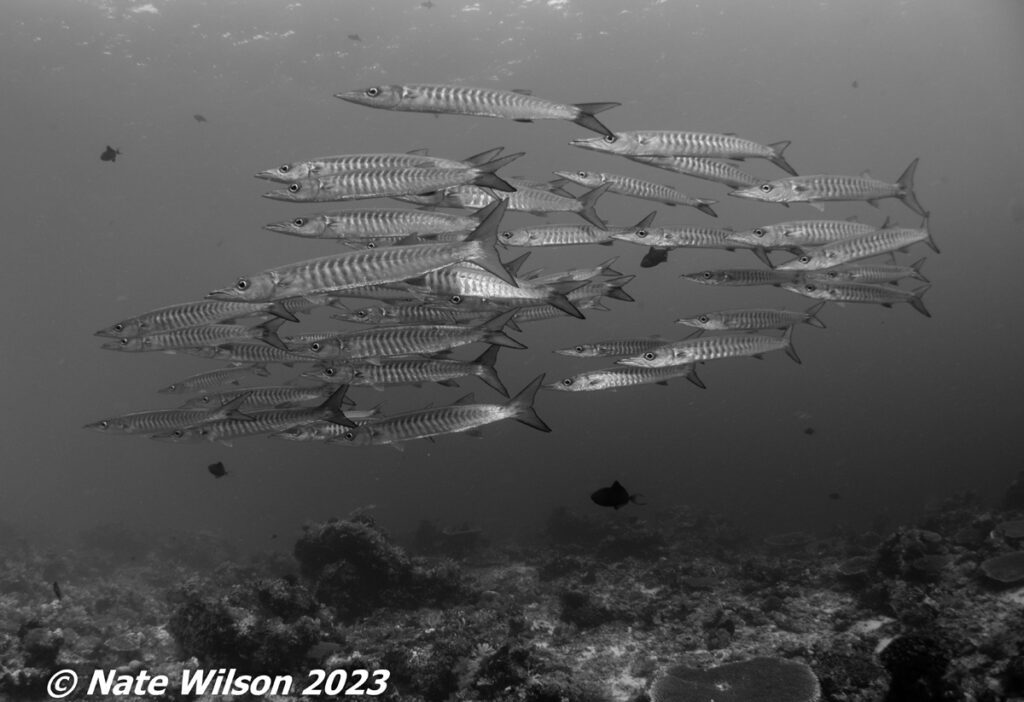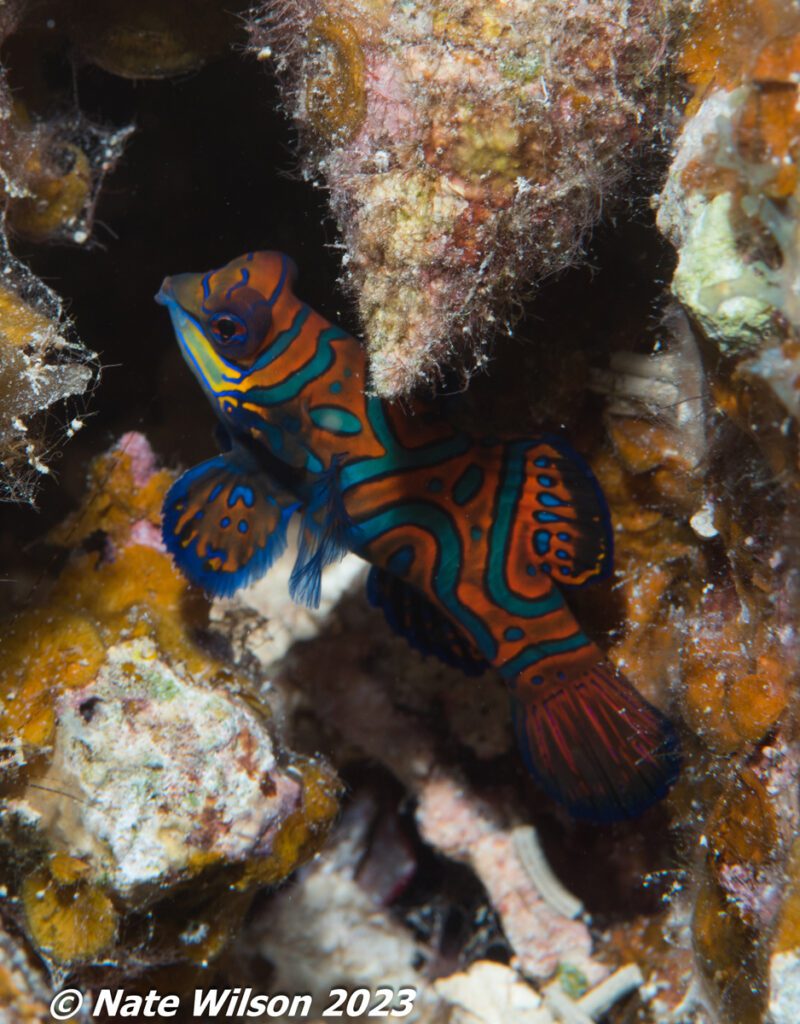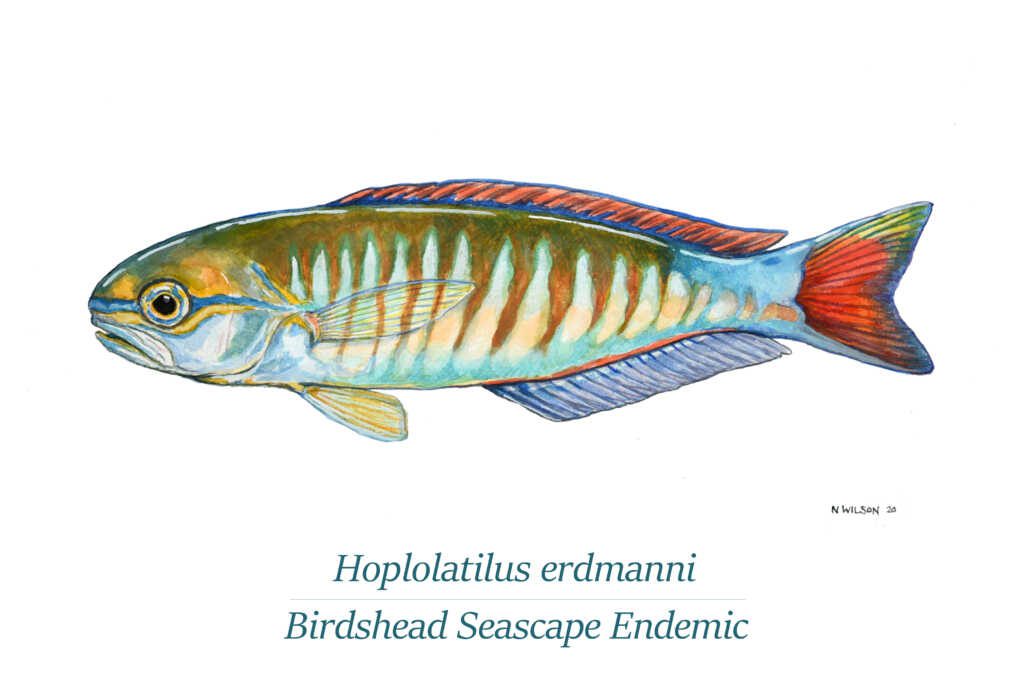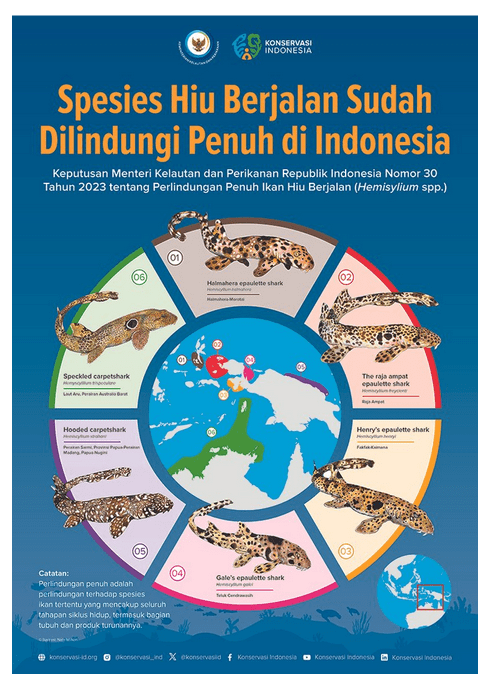Marine life artist’s first visit to Raja by Nate Wilson
Administrator’s note: Many of you may be familiar with Nate’s artwork as he is a frequent contributor to the BHS. We introduced him and his incredible marine life paintings a couple of years ago (click here for that story). He also created a poster of the BHS endemic fishes for us as well. Earlier this year he finally visited Raja for the first time spending 4 weeks in north Raja’s Dampier Strait with Papua Diving at their Kri and Sorido resorts. I think you will be amazed at his reaction to seeing the world’s richest reefs for the first time! He even took a camera, although it flooded halfway through the trip! Yes we will share a few.
To learn more about Nate’s work and to purchase paintings please visit Nate’s website, www.natewilsonpaints.com. Also visit his Facebook page, https://www.facebook.com/natewilsonpaints.
I have never been anywhere like this. Every dive here feels like it is a truly wild place. If you have heard of Raja Ampat and the Bird’s Head Seascape then you will know that this is the epicenter of biodiversity in the ocean. There are more species of fish and coral here than anywhere else. Each dive reflects that.
The amount of fish life is stunning. There are times that you can hardly see the reef for the fish above it. Sometimes, you are engulfed in fish, swallowed by huge schools of fusiliers that race across the reef in numbers so large that you can hear them moving underwater. It is like standing next to a subway train in motion or as if you are walking along the highway while trucks are passing you.
The diversity and density of species is overwhelming. The reef is clouded with fish life, massive shoals of chromis, dashing schools of flasher and fairy wrasses, swarms of anthias hovering over coral heads. Everywhere, there are pairs of angelfish; emperors, regals, six barred, coral beauties. Herds of tangs grazing, mixed groups of parrotfish, clusters of goatfish and bigger wrasses, snappers, hunting and bulldozing their way along the bottom. In the current, on the reefs edge hang hordes of jacks, flashing silver barracudas, snappers, sweetlips, Napoleon Wrasses, groupers, coral trout. Dog tooth tuna and giant trevally flash out of the blue, and on every dive sharks; black tip and white tip, every once and a while a gray reef, and on the bottom hidden under ledges and in caves lie wobbegongs. Among this, are hundreds of tiny fish that melt in and out of the background. There are tons of gobies and blennies, dottybacks, tiny wrasses, and juveniles of every species. If you have an eye for camouflage then you can find pygmy seahorses, pipefish, mandarin gobies, scorpion fish, crocodile fish. The mass of fish life is truly astounding.
The coral cover might be even more mind blowing. The reefs are covered in a huge array of hard and soft corals. There is seldom an empty space. Every space available is filled by something alive. There are shapes and types I have never seen before. All the gaps between large colonies are filled in with ascidians, tunicates, sponges, etc. etc. I could spend an entire dive in one spot and still not unpack everything that is there.
In other places that I have visited, specific sites are known for specific things. This site is a nudibranch site, that site is a shark site. In the Dampier strait, with a few exceptions, each site is an everything site. There is so much life and motion that it is hard to concentrate on one thing. My attention kept being diverted from one amazing scene. This is a place where you can be engrossed in something tiny like a nudibranch crossing a section of coral and then look up to find that you are in the middle of a school of butterflyfish, or a herd of Bumphead parrotfish is passing by. I think it took me the first five or six dives until I could start to focus on one thing without being constantly distracted.
I’d like to share a couple of entries from my logbook:
Dive #7/89ft/60 min.
Sawandarek- On the backside of Mansuar Island, a reef in front of the village. The island curves gently here and the site is protected by the bay. The reef slopes down to around 90 feet. We saw turtles at the surface. Backwards roll in and slow descent down the slope. Saw a Napoleon Wrasse on the way down. At 89 feet there is a huge coral colony-cabbage coral, scroll coral, montipora…something like that anyway. Above it hovers a massive fish ball-tons of small yellow snappers, goatfish, bronze sweepers, some coral trout with emperors mixed in, and a big school of sweetlips- striped and dotted.
Through it all there is a huge mass of convict blennies-almost like a blizzard of fish on top of another blizzard of fish. The coral colony is huge; like half of a basketball court. The fish are unconcerned, they pass around us and reform. On the sand bottom-soft corals…opening and closing their arms, a huge Emperor angelfish follows us as we head toward the slope. Some kind of weird small tuskfish I have never seen before in the sand. There is a wobbegong under a bommie with golden sweepers. As we climb the slope we run into 1,2,3,5 turtles.
Each one more massive than the last. They are eating or sleeping with their heads in the coral; just gigantic and must be ancient. There are metal racks on the slope with hard coral colonies growing on them for restoration. They are covered in swarms of flasher wrasse-the males flickering blue, fairy wrasses, and anthias. Moving up the slope we are mobbed by batfish and surgeonfish. The reef right in front of the village is a mass of yellow leather coral, big colonies of acropora covered in flights of chromis. Above them, there are groups of unicornfish and clumps of big eyed emperor, a giant sweetlips drifts among them. We make our way to the base of the jetty. The piers are surrounded by chubs and surgeonfish, a striped horde of Sergeant Majors dashing about below the clouds. The water is so clear that you can see the people on the jetty staring down at us.
Dive #41 Mikes Point- for the 2nd time- 80ft/60 min (Backside of the island (compared to last time anyway)
Dropping down with a slight current behind us. Drifting over a field of sea whips. The wall starts, there is a huge rock separated from it and in the wedge shaped gap between, a small school of Sweetlips.
A slow drift along the wall, soft corals waking up in the current , sea fans and clouds of anthias. Pairs of angelfish, regals, six barred, pygmies, moving vertically along the wall. Tiny gobies and hawkfish flitting everywhere as we are dropping down to the ledges. On a sea fan, our dive guide, Kamber finds a pygmy seahorse deep in the darkness where the wall overhangs. Climbing up now, there are cleaner wrasse stations and then we are onto the slope in front of the island. Here is a bubble coral with orangutan crabs. Tons of soft leathers and we zigzag across the slope following a massive porcupine puffer until we are shallow enough to see the water breaking against the island’s edge. Between two massive rocks, speckled with orange turbastrea corals, is a small cave. Inside, a big cloud of bronze sweepers and two small white tip sharks circle. We watch for a few minutes then back away onto the reef flat. We drift across a field of branching stony coral and exit where the water is deeper.
I don’t know that I could have a favorite dive at Kri. Each site delivers. Every dive was different, depending on the time of day, the light, the current, etc. I can tell you that I never got bored with anything there. Whether it was evening dives off the jetty at Sorido, with its oddly delicate corals, protected by the lagoon, where we looked for mandarin fish…and found them, or muck diving in the white sand across the strait at Saporkrang, the mix of wall and slope at Mike’s Point, or places like Chicken Reef, where I stopped counting Napoleon Wrasse after I got to fifteen, it was all amazing. Even the snorkeling was fantastic. I spent hours around the jetty at Kri watching little fish in the coral and big stuff drifting by out of the blue over the drop off.
I was extremely fortunate to be able to visit the Bird’s Head Seascape. It was wonderful to meet some of the fish in person that I have painted in and great to visit a place that I have read about and thought about for such a long time. I was even more fortunate to have visited in the company of Dr.Mark Erdmann and his family, who were so kind and generous to let me spend time with them. I don’t think that my trip would have been half as great without them. I also really enjoyed being able to talk with Max Ammer about setting up his resort at Kri and his knowledge and stories of Papua in general. He has built something truly special there. I also have to thank the great people who work at Kri Eco Resort and Sorido. Their kindness and care is unmatched. A big thank you especially to Dolly, Kamber and Pak Lucas. A big thank you also to anyone who works or has worked to conserve the Bird’s Head Seascape.
It is an amazing, wild place of incredible diversity and should be protected as such. I encourage anyone who reads this to contribute toward that end in some way. There are a multitude of options…here are a few suggestions:
Raja Ampat Research and Conservation Centre (RARCC engages indigenous communities in the development of financial self-reliant projects and small businesses which stimulate conservation and protection for the present and future generations of Raja Ampat.)
Child Aid Papua (Child Aid Papua believes that every child has the right to education and healthcare, regardless of who they are, where they are, or how much money their family has. They are committed to providing children living in the remote provinces of West Papua the opportunity to improve their knowledge of the world around them and to gain skills for lifelong learning.)
ReShark (ReShark is an international, collective effort to recover threatened sharks and rays around the world. There first program, StAR led by the West Papua Provincial Government and the Research and Innovation Agency of Indonesia aims to recover zebra shark populations in Raja Ampat that are important for healthy marine ecosystems.
Breaking news: Nate’s “Walking Shark” paintings have been incorporated into a new Konservasi Indonesia poster.
You can also find the poster on the KI website





































